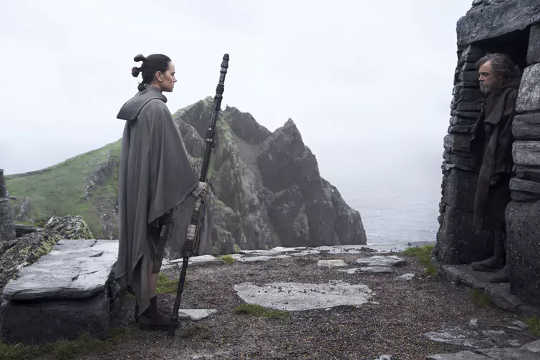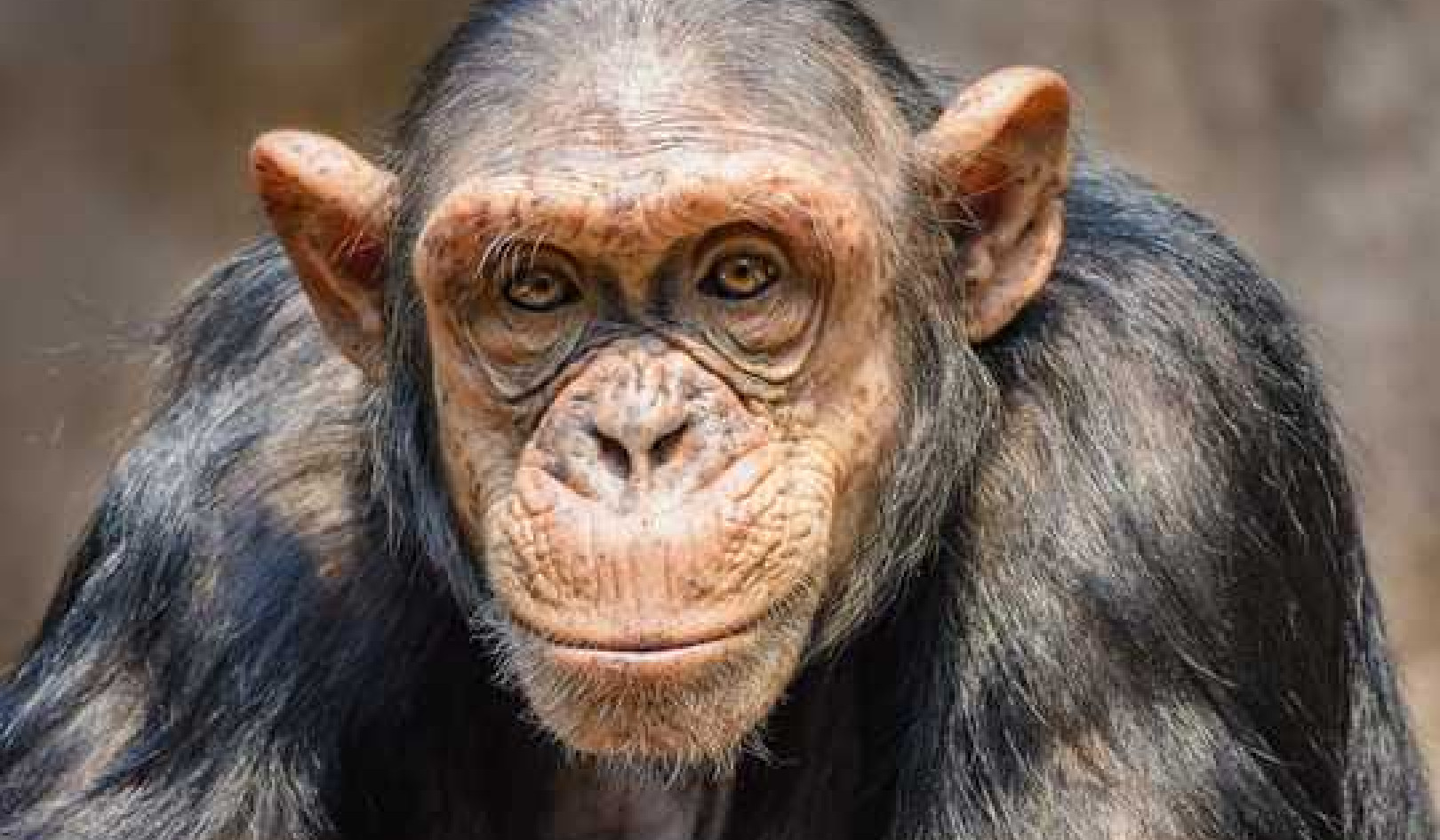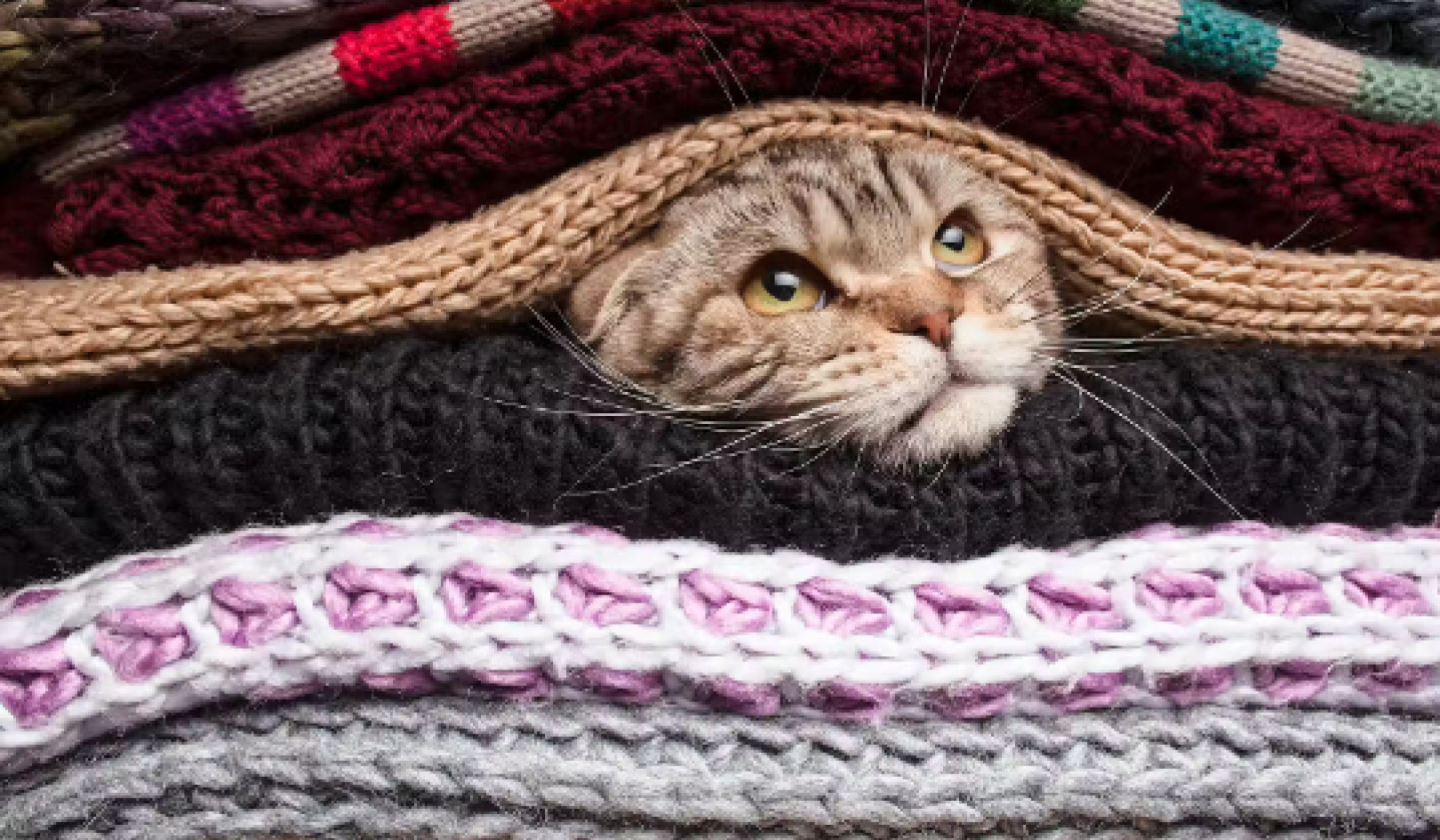
When Rey met Luke. Disney
Warning: Spoiler alert
The Star Wars universe is no stranger to political allegories. Many viewers have pointed out the parallels between the original Empire and the Nazis, to give the most famous example, with the plucky Rebel Alliance cast as the US/British resistance who never gave up hope in the face of unconscionable evil.
Having just seen The Last Jedi, there are again political parallels aplenty. This time, however, they are not from the past but the present day, making this a contender for the most unambiguously political Star Wars movie yet.
It starts from the first sentence of the iconic opening crawl, which tells us “The First Order reigns”. As the movie rolls on, this ruling cabal looks increasingly like a proxy for the Trump administration.
The First Order is led by Snoke, as easy to mock as Trump with his old, grotesque appearance. We have Admiral Hux, the dapper “acceptable” face of the Order – not unlike some young ideologues of the alt-right. And the Order’s leadership is both white and male – the other key figure being Kylo Ren, who, like Snoke, uses the Dark Side of the Force.
Since its rise to power, the First Order has obsessively undermined the ideologies of the former New Republic, which calls to mind Trump repealing Obama-era legislation in areas such as health and welfare.
In spreading fear among citizens and dismantling liberal institutions, its leaders also resemble ordinary businessmen and politicians. Where, in The Force Awakens, Kylo harboured fantasies of being the next Darth Vader, here Snoke sneers that he should “take that ridiculous” mask off. Facing Luke Skywalker in a duel, Kylo also removes his cloak. Dressed in a grey suit, he is less Darth Vader and more Donald Trump Jr.
The First Order’s arch enemy, General Leia Organa, meanwhile stands in for Hillary Clinton – another woman with too little support for her political agenda, with the air of a lost cause, whose loyalists happen to be much more ethnically diverse than their opponents. This latter difference is thrown into sharp relief when the white Captain Phasma attempts to destroy Finn and Rose, two Resistance fighters of colour, calling them “scum”. Not overt racism, but reminiscent of a US administration that has advocated racist policies.
Broken systems
Where once there was a new hope, The Last Jedi is more cynical about the future and the resources available to bring change. Luke Skywalker represents an organisation that can no longer be trusted to do the right thing.
At the end of The Force Awakens we saw Rey handing Luke his old lightsaber, amid soaring music and with a sense of poignancy. When the scene is completed here, Luke unceremoniously throws it away. He may want to archive the ancient Jedi texts, but he is reluctant to help the Resistance fight the First Order.
A living legend, he has failed, as he admits himself, to live up to the expectations of the galaxy’s repressed people. He’s a little like the crumbling systems of social justice often unable to protect citizens’ rights in America – take the Supreme Court’s recent failure to prevent Trump’s travel ban, for example. When Luke calls the Jedi hypocrites for failing to prevent the rise of their enemies, it could be a comment on current times.
Rey also learns Luke has lied to her about Kylo’s Jedi training, part of a recurring theme in the movie about confusion and not knowing who or what to trust. Take, for example, Kylo’s new use of the Force, which means he can appear in the same location as Rey even when they are light years apart. If that was not confusing enough, she later learns that his apparent interest was orchestrated by Snoke to manipulate her.
Eventually, Rey realises that even Jedi Master Luke is unreliable. It seems there are no obvious certainties in a constructed reality. “I thought I’d find the answers here,” she says. “I was wrong.”
A New Hope?
While it looks to the future, the film is haunted by its past. There are numerous flashbacks to the earlier films. The charts that swirl around the Resistance fighters on glass screens are reminiscent of those in the original trilogy, and Artoo plays Leia’s famous “Help me Obi-Wan” message to persuade Luke to help Rey.
Then, arriving at a base on a seemingly snow-covered planet where the Resistance must face an army of next-generation Walkers, it seems like ice planet Hoth, site of the famous battle sequence from The Empire Strikes Back. But just as Obi Wan once said “that’s no moon” of the Death Star, this is no Hoth. One of the fighters licks the white stuff laying on the ground. Not snow: salt. Again, our expectations are undermined.
{youtube}https://youtu.be/Q0CbN8sfihY{/youtube}
Ultimately The Last Jedi only offers bleak optimism. There is no certainty of good triumphing over evil; no one in the galaxy answers Leia’s call for help. As Finn and Rose’s discovery of a wealthy arms dealer suggests, the game of war is an economically fruitful one – a sideshow masking ongoing political corruption.
There is still hope, of course. This is Star Wars, after all – and of course you might expect part two in the trilogy to end on a downbeat note, just like The Empire Strikes Back did. But whereas in the original trilogy it was the current generation – Luke, Leia, Han Solo – who promised to deliver the galaxy from evil, here we are already looking beyond Rey, Finn and Rose to a new generation of children.
![]() Luke may not be the last Jedi, but, the film suggests, the damage done by the real-life political equivalent of the First Order is lasting. Without BB-8 or Artoo on-hand in our own galaxy, nothing is easily fixed. Broken systems will take decades to repair.
Luke may not be the last Jedi, but, the film suggests, the damage done by the real-life political equivalent of the First Order is lasting. Without BB-8 or Artoo on-hand in our own galaxy, nothing is easily fixed. Broken systems will take decades to repair.
About The Author
Rebecca Harrison, Lecturer in Film and Television, University of Glasgow
This article was originally published on The Conversation. Read the original article.
Related Books:
at InnerSelf Market and Amazon
























